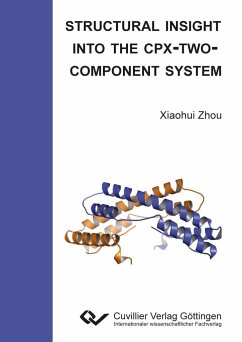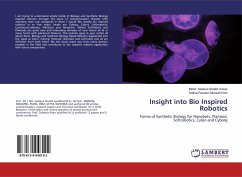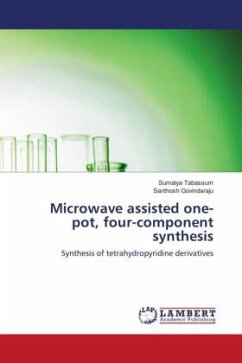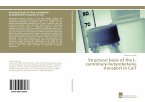Two-component systems (TCSs) are the chief signal transduction systems used by bacteria for sensing their environment and auxiliary proteins provide response to additional stimuli. The Cpx pathway is one prevalent TCS in Gram¬negative bacteria which consists of the membrane integrated histidine kinase CpxA, the cytoplasmic response regulator CpxR and the periplasmic auxiliary CpxP protein. The Cpx pathway is activated by different signals that typically emerge during infection such as elevated pH, increased osmolarity, surface contact and accumulation of adhesin subunits. After induction, CpxA autophosphorylates, activates CpxR by phosphorylation and CpxR~P finally acts as a transcription regulator of target genes. It was known from other studies that the auxiliary CpxP protein inhibits CpxA autophosphorylation presumably by direct protein-protein interaction and that CpxP supports degradation of P pili that are crucial for uropathogenic Escherichia coli during kidney colonization. However, it was not clear how these two important biological functions of CpxP are linked. In this study, the crystal structure of the bifunctional auxiliary CpxP protein was solved at 1.45 Å of resolution. Two monomers displaying a novel fold are interdigitated like ¿left hands¿ forming a cap-shaped dimer. Each monomer is strengthened by double hydrogen bonds between two highly conserved LTxxQ repeat motifs. Based on the combined structural and functional studies we propose that CpxP inhibits its cognate histidine sensor kinase CpxA through direct interaction between its concave polar surface and the negatively charged sensor domain on CpxA. Sensing misfolded pilus subunits by direct interaction with an elongated hydrophobic cleft on the convex surface induces the release of CpxP from CpxA. Due to their central role in bacterial virulence regulation and their absence in animals including human beings, TCSs have been suggested as targets for antimicrobials. Blocking protein-protein interaction between CpxP and pili would prevent the formation of the essential biogenesis and quality control system of pili and consequently prevent adhesion. Thus, the structural details from this study highlight CpxP as a future target for antimicrobials against a TCS acting from the exterior of the bacterial cell.
Hinweis: Dieser Artikel kann nur an eine deutsche Lieferadresse ausgeliefert werden.
Hinweis: Dieser Artikel kann nur an eine deutsche Lieferadresse ausgeliefert werden.








